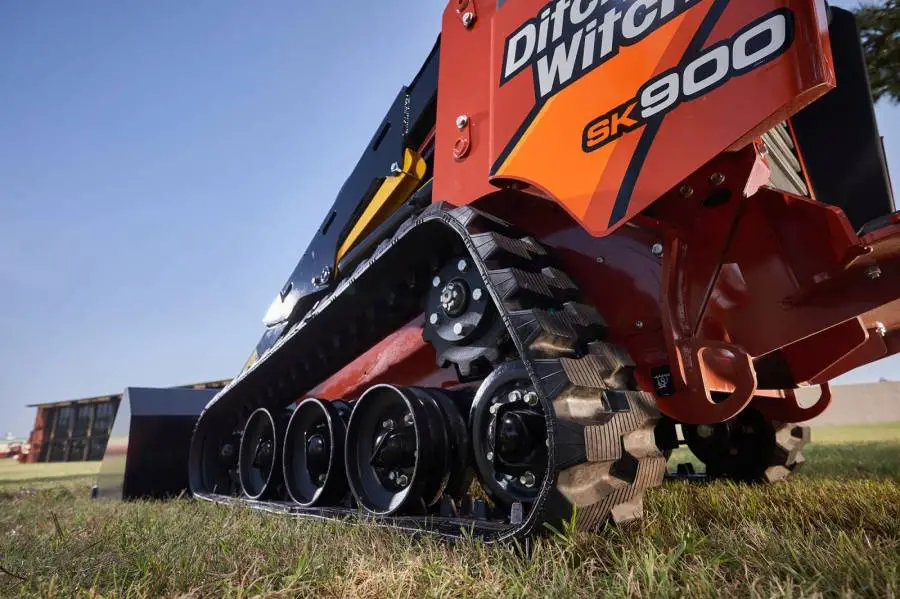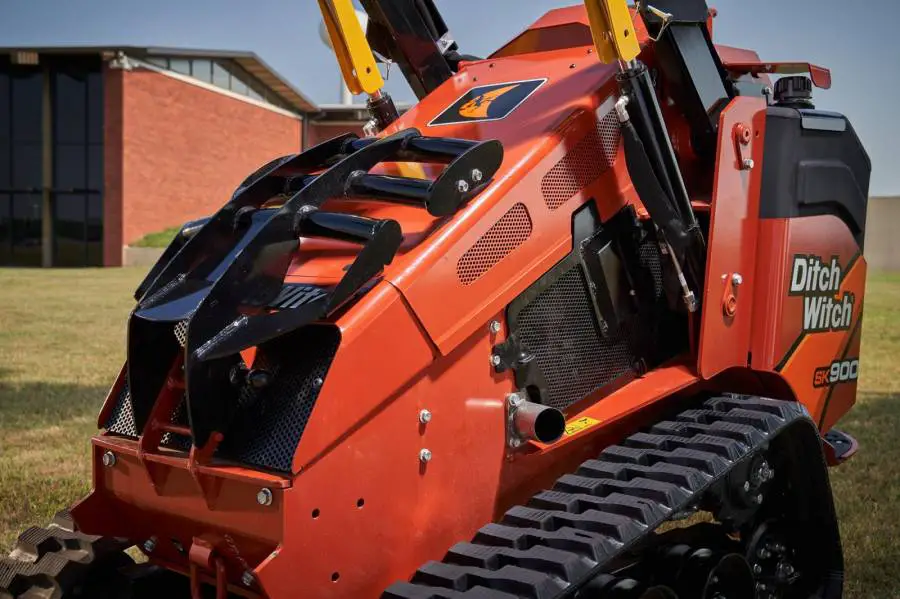Table of Contents
A Ditch Witch trencher has revolutionized the construction industry in unique ways.
The company has been operating since 1949, creating trenching products that give users an easy task and great convenience.

It’s no wonder they call it the first “endless conveyor ditch digging machine.”
Whereas this machine will dig trenches and do all those nifty tricks, it can fail to operate effectively sometimes. It could cause panic for someone who does not understand how they work.
We’ll teach you how to troubleshoot the Ditch Witch. Keep reading.
Issues With The Ditch Witch
There are several Ditch Witch models, but most follow a similar operational method. Today we will look at one of the best trenching machines on this market.
Follow this guide to know how you can take care of simple issues without calling a mechanic or spending too much money.
It could be something small that only requires a minor tweak, and you can continue your work.
Understanding The Machine
The first step of troubleshooting a Ditch Witch is understanding how it works. It’s much easier to follow the steps we will share if you know what you are doing.
So, what is it about this trencher that attracts every user? First, the brand Ditch Witch is well-known in the world of underground constructions.
The equipment is built by Charles Machine Works, Inc., a Perry, Oklahoma-based company.
Ditch Witch is, however, the term used to primarily describe the original machine from the company, a power trencher.
We are talking about a power trencher called Ditch Witch, not the brand.
How It Works
The machines apply a vertical bucket line, which digs trenches in the soil. It happens on a small scale, using a continuous conveyor chain, often seen in large digging machines.
Tradition Witch features about a 12-foot conveyor chain and two dozen small double-piece digging buckets.
The buckets have sharp razor-like blades in the vertical chain, which dig out the ground.
Each bucket is attached to a chain. The chain is looped, allowing it to pull the buckets over ladder-looking mechanisms to dig and take out chunks of soil.
The ladder pulls the soil upwards, arranging neat piles on the ground.
It is an endless cycle that works fully until the whole task is completed. The process ends in a trench measuring four inches and about thirty inches deep.
The Power Behind
A small internal combustion engine powers everything on the Ditch Witch, and this seven-horsepower engine is powerful enough to transfer mechanical energy via the belt drive.
You know and understand this mechanism well if you have seen how a lawn tractor is driven.
With the operator on top of the trencher, they can control it using hand controls at every angle of operation. You can choose how wide or deep you want the holes to be.
Troubleshooting
As stated above, the easiest way to troubleshoot the Ditch Witch is to understand its mechanisms. Some of this information is not well captured in the operator’s manual.
We hope the content above is enough to keep you going.
Here are the common issues on two standard machines, a fluid mixer and a trencher:
The Rate Of Flow Feed From The Hopper Is Slowed
The FM13V comes with a metering plate under the dry chemical hopper. This piece is set at the right size to match the material flow with the fluid flowing through the venturi.
The plate plays the most crucial role in maintaining the approximate time expected to power 22.7 kg of material into the tank when the engine performs thoroughly.
The drilling power is maximum when the mixing results are optimum. An effect will be felt if you change the material flow rate with resizing.

It is a common issue that makes the machine perform much slower. To resolve:
- Run the engine at full speed
- Put valves control in the mixing position as recommended
- Remove any obstruction from the metering and ensure the screen is in place
- Get rid of the build-up and clean the horses
Always check the pump instruction when looking for the installation procedure. It should be indicated on the checking flow.
Pool Drilling Fluid Mix – FM13V
Sometimes the mixer does not get the fluid mixed as desired. It is an issue noticeable, especially when the machine is still new.
It can be fixed by testing the water pH and treating it where necessary. Be sure to check the preparation instructions.
Clumps Piling In The Drilling Fluid Tank
Another issue with the FM13V is probably clumping in the drilling fluid. The first indication is when the machine does not operate efficiently when mixing.
Check and reset the feed rate – that should handle the problem quickly.
Issues With The Hydrostat
Most people with the Ditch Witch 3700 have reported issues with the hydrostat that drives the wheels. It might start out trenching perfectly.
However, after around 150 ft, it starts behaving like the brakes are on. It may occasionally lunge forward during work.
This issue was reported on heavyequipmentforums recently, with the user experiencing more problems after.
For instance, it finished the trench but getting it loaded on the trailer was also a big issue.
One primary way to fix this issue is to block it up and run the power train. While on it, keep an ear on the noises at the rear differential.
Another solution would be to check the hauling power. The machine has a backhoe attachment and a tow-haul push button around the backhoe area.
Sometimes the switches refuse to disengage 12v power to the tow haul hydraulic valve. It should be easy to fix.
Backhoe That Won’t Drive
Another common issue we have met from different users is the backhoe trencher 3700 that struggles driving forward and backward. It could be slightly on the incline.
You can fix this by finding the tow/haul button and then using it to set the machine in place correctly. Some users have complained of this issue for years without realizing it.
But now you can fix your machine and have it running smoothly again.
Engine Running Rough
Another user on hearth.com mentions having a Ditch Witch that started running rough after some time of use.
The backhoe performs exceptionally through the first 6 to 8 gallons of diesel but starts experiencing issues when the tank gets below ¼.
Low throttle would be found, but it can hold the high throttle for a long time. It also could be an indication of an issue with the engine.
To fix it:
- Try changing the fuel filter. If the current one is still ok, clean it and then put it back, ensuring it sits properly.
- Check for a hole in the fuel pickup tank. Keeping it full should give you a good performance.
Conclusion
Troubleshooting Ditch Witch trenchers is not hard. As you can see from this guide, it only takes understanding your machines and looking for the source of trouble.
It depends on your specific model and perhaps how well you follow instructions. We hope now you can enjoy your trenchers when you can troubleshoot quickly.
